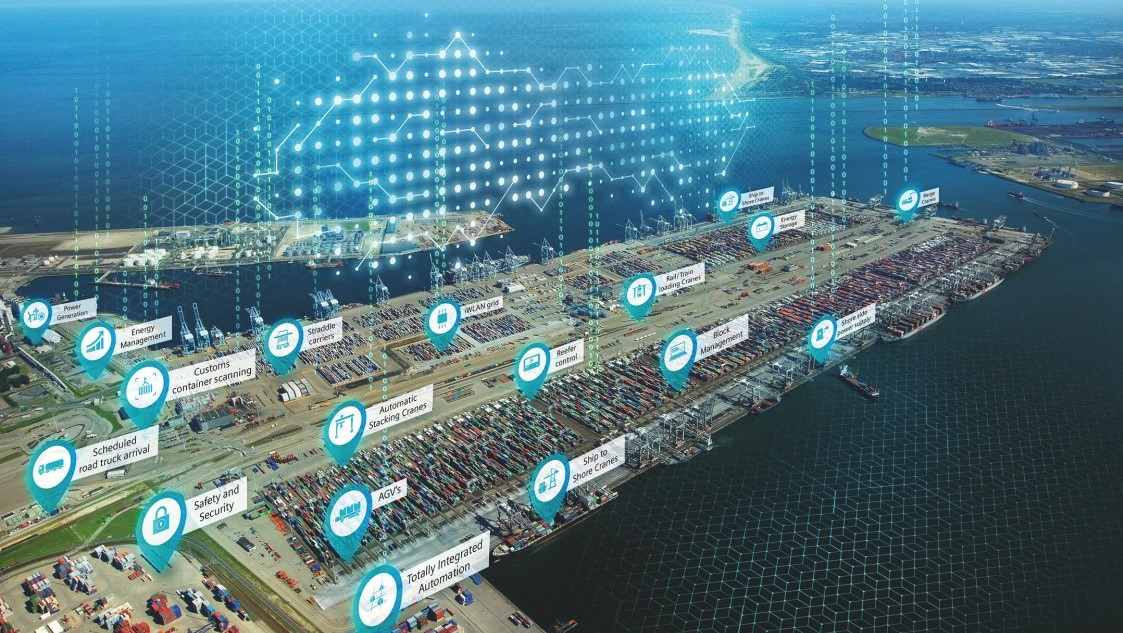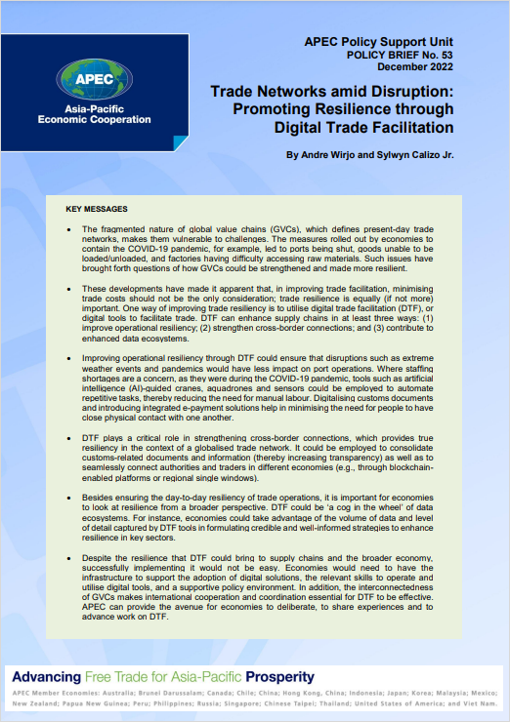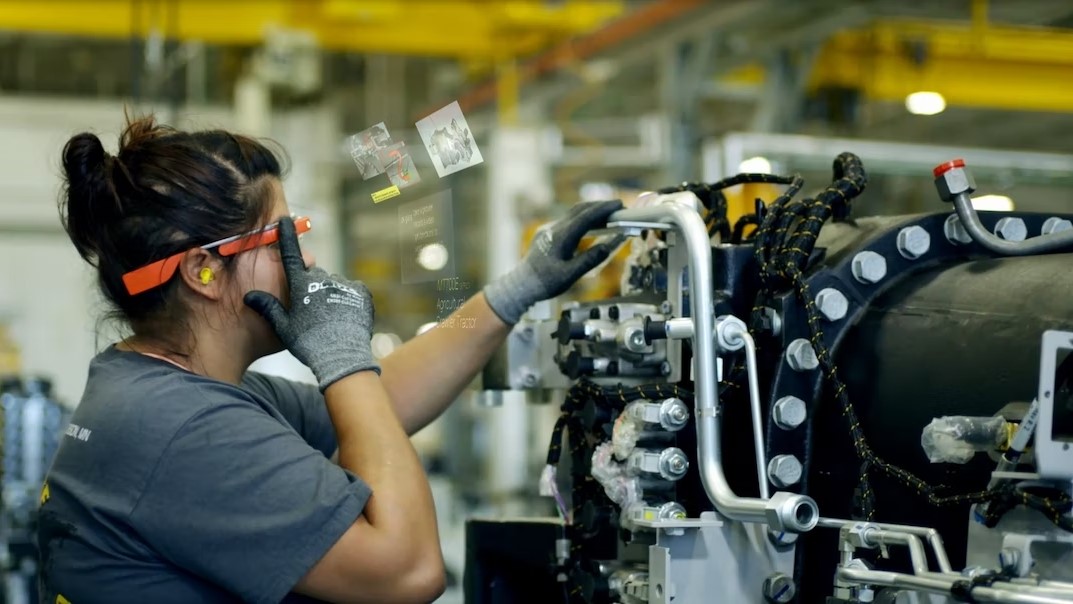Published 06 December 2022
Severe shortages during the Covid-19 pandemic highlighted the importance of trade resilience. Digital trade facilitation tools are key to promoting stronger value chains and policies should be crafted to support such tools, the APEC Policy Support Unit writes in a policy brief, the third in a series this year supported by the Hinrich Foundation.
For many of us, shopping in stores – those that remained open – during the Covid-19 pandemic was a stressful activity. Despite braving the risks, we often ended up disappointed by a long list of out-of-stock goods and almost empty shelves that used to hold our favorite products. But at the back of this inconvenience was a much broader problem – the measures rolled out by economies to contain the pandemic had led to ports being shut, goods unable to be loaded or unloaded, and factories having difficulty accessing raw materials.
These developments made one thing clear: the pre-pandemic focus on minimizing trade costs should not have been the only consideration when improving trade facilitation. Trade resilience, as the pandemic highlighted, is equally important, if not more. The application of digital tools to facilitate trade, collectively labelled digital trade facilitation (DTF), is one way of improving trade resilience. There are at least three ways that DTF can help us build more resilient trade.
DTF improves operational resilience
By doing away with paper documents and employing cloud-based solutions, DTF makes trade more resilient to infrastructure damage caused by adverse events such as floods and typhoons, hence ensuring business continuity. In the context of the Covid-19 pandemic, where widespread infections could lead to staffing shortages, tools such as artificial intelligence (AI)-guided cranes, aquadrones, and sensors could be used to automate repetitive tasks. Digitizing customs documents and introducing integrated e-payment solutions could also help minimize the need for close physical contact.
DTF strengthens cross-border connections
This is crucial because achieving true resilience in a globalized world requires us to seamlessly connect authorities and traders across borders. For example, blockchain technology that is interoperable across various platforms enables traders based in one economy to submit documents online and have them remotely processed by customs officials in another economy. Common anchor points such as regional single windows with participation by many economies can also help us build stronger bridges.
DTF contributes to enhanced data ecosystems
It is important for economies to look at resilience from a broader perspective by developing strategies and action plans focused on key sectors. But formulating credible and well-informed strategies requires us to have access to a range of data and tools – something that DTF, as a ‘cog in the wheel’ of data ecosystems, can provide. In fact, DTF has great potential considering the volume of data and the level of detail that could be collected by such tools.
Despite the resilience that DTF could bring, successfully implementing it would not be easy because we would need the infrastructure to support these digital solutions, the relevant skills to operate and utilize digital tools, and a supportive policy environment.
We can support DTF by addressing its challenges
For example, policies that encourage competition and investment in high-speed telecommunication networks could boost the interest of service providers in widening their network coverage and ensuring that the quality of their services is maintained. Alternatively, we can encourage more flexible public-private partnerships or utilize grants, subsidies, and other incentives to support the upgrading of legacy systems.
Another way to support DTF is by boosting talent attraction and retention in sectors such as data analysis and AI development since DTF involves programming machines and modelling AI solutions, among others. At a broader level, we need to ensure that users of such tools will have not just the right skills but also the willingness to utilize them.
At the end of the day, realizing the benefits of DTF will require our collective effort, both domestic and beyond. International and regional fora such as the Asia-Pacific Economic Cooperation (APEC) can provide the avenue to deliberate, share experiences, and advance work on DTF – all for building more resilient trade networks amid disruption.
***
To learn more about the role of digital trade facilitation tools in strengthening value chains, read the new APEC policy brief supported by the Hinrich Foundation.
© The Hinrich Foundation. See our website Terms and conditions for our copyright and reprint policy. All statements of fact and the views, conclusions and recommendations expressed in this publication are the sole responsibility of the author(s).







